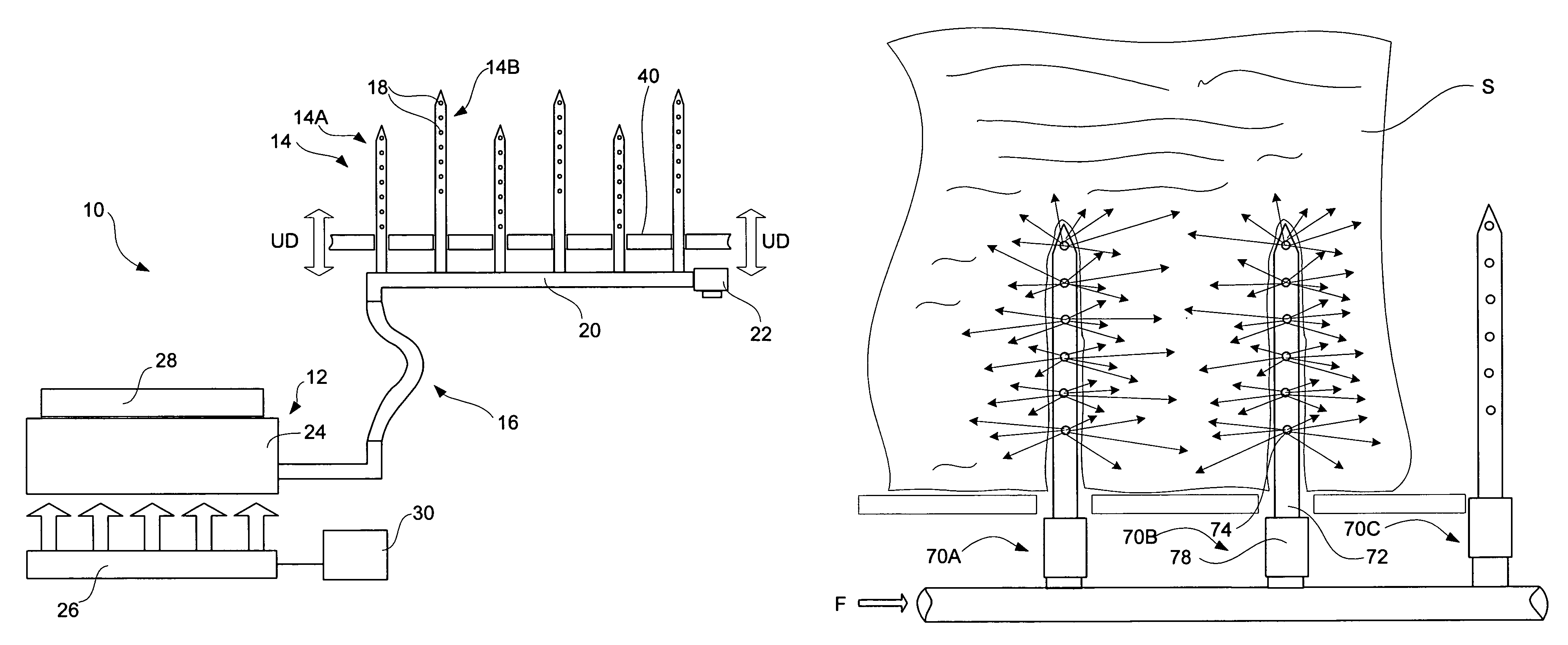Flavor infusion cooking device and method
a technology of infusion cooking and flavor, which is applied in the direction of liquid transfer devices, grain treatment, grain husking, etc., can solve the problems of product unpredictable and uneven taste, unfavorable product quality, and numerous drawbacks of system types, so as to achieve greater control over the cooking process, more flexibility in utilization and directing, and quick attachment
- Summary
- Abstract
- Description
- Claims
- Application Information
AI Technical Summary
Benefits of technology
Problems solved by technology
Method used
Image
Examples
Embodiment Construction
[0029]Referring to FIG. 1, there is shown a diagrammatic side view of an exemplary embodiment of the flavor infusion device 10. The flavor infusion device 10 comprises a reservoir 12, one or more infusers 14A and 14B, and a conduit 16 that carries fluid from the reservoir 12 out through apertures 18 in the infusers 14. As used herein, the word “fluid ” means liquid, vapor and gas. The infusers 14 preferably are adapted to penetrate an item being cooked (not shown). A plurality of infusers 14 are shown attached to a fluid manifold 20 connected to the conduit 16. The lengths of the infusers 14A and 14B can be different and / or the positioning of their aperture 18 can be varied, if desired. The conduit 16 is shown connecting between the main compartment 24 and the manifold 20. A pressure relief valve 22 can be included to release any excessive pressure build-up in the device. The reservoir 12 has a main compartment 24 that retains liquids and any solids, and a heat source 26 is used to ...
PUM
 Login to View More
Login to View More Abstract
Description
Claims
Application Information
 Login to View More
Login to View More - R&D
- Intellectual Property
- Life Sciences
- Materials
- Tech Scout
- Unparalleled Data Quality
- Higher Quality Content
- 60% Fewer Hallucinations
Browse by: Latest US Patents, China's latest patents, Technical Efficacy Thesaurus, Application Domain, Technology Topic, Popular Technical Reports.
© 2025 PatSnap. All rights reserved.Legal|Privacy policy|Modern Slavery Act Transparency Statement|Sitemap|About US| Contact US: help@patsnap.com



